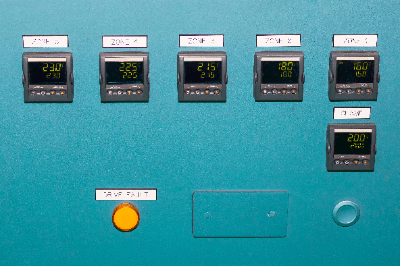What Is a Temperature Regulator?

A temperature regulator is a device that adjusts a heater or another control mechanism to maintain a target temperature, based on input from a temperature sensor. While thermostats offer basic temperature control, temperature regulators, especially digital or electronic types, provide precise control by setting and maintaining target temperatures through feedback from temperature sensors.
Temperature regulation technologies include various control methods such as proportional (P), integral (I), differential (D), combined PID control, and two-degree-of-freedom (2-DOF) PID control to achieve precise temperature management.
Uses of Temperature Regulators
Temperature regulators are employed across a spectrum of applications, from household appliances like toasters and kotatsu, to industrial settings for air conditioning, managing temperatures in manufacturing processes, and controlling combustion temperatures in waste incineration plants and kilns for ceramics.
Principle of Temperature Regulators
Mechanical temperature regulators, or thermostats, use a bimetal strip that bends with temperature changes to open or close an electrical contact. Electronic temperature regulators, on the other hand, are part of a control system that includes a temperature sensor and an actuator. These regulators compare the detected temperature with the set temperature and adjust controls to minimize any difference, utilizing feedback control for rapid and stable temperature management.
Other Information on Temperature Regulators
Control Method of Temperature Regulator
- ON/OFF Operation: Alternates between full ON and OFF states to maintain temperature around the target value.
- P-Operation (Proportional): Adjusts output proportional to the difference between actual and target temperatures, ensuring finer control as the temperature approaches the set point.
- I-Operation (Integral): Takes into account both the magnitude and duration of the temperature difference, improving control accuracy over time.
- D-Operation (Differential): Responds to rapid temperature changes, adjusting output based on the rate of temperature change.
- PID Control: Combines P, I, and D operations for smooth and responsive temperature control, effectively managing disturbances.
- 2-DOF PID Control: Enhances PID control by separately optimizing responses to disturbances and target value maintenance, achieving balanced performance.